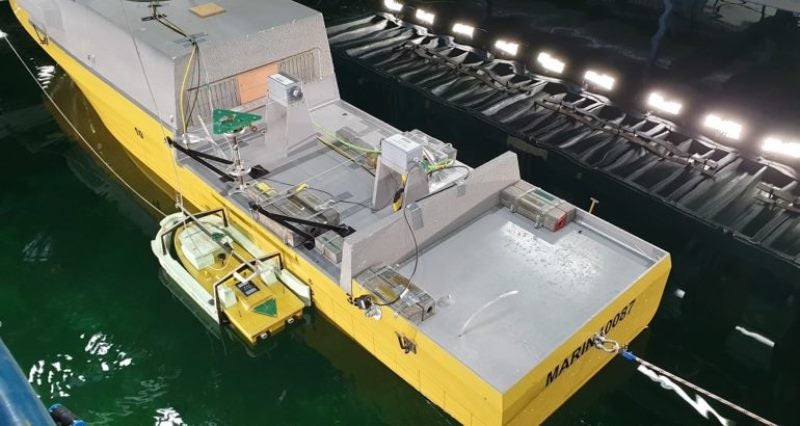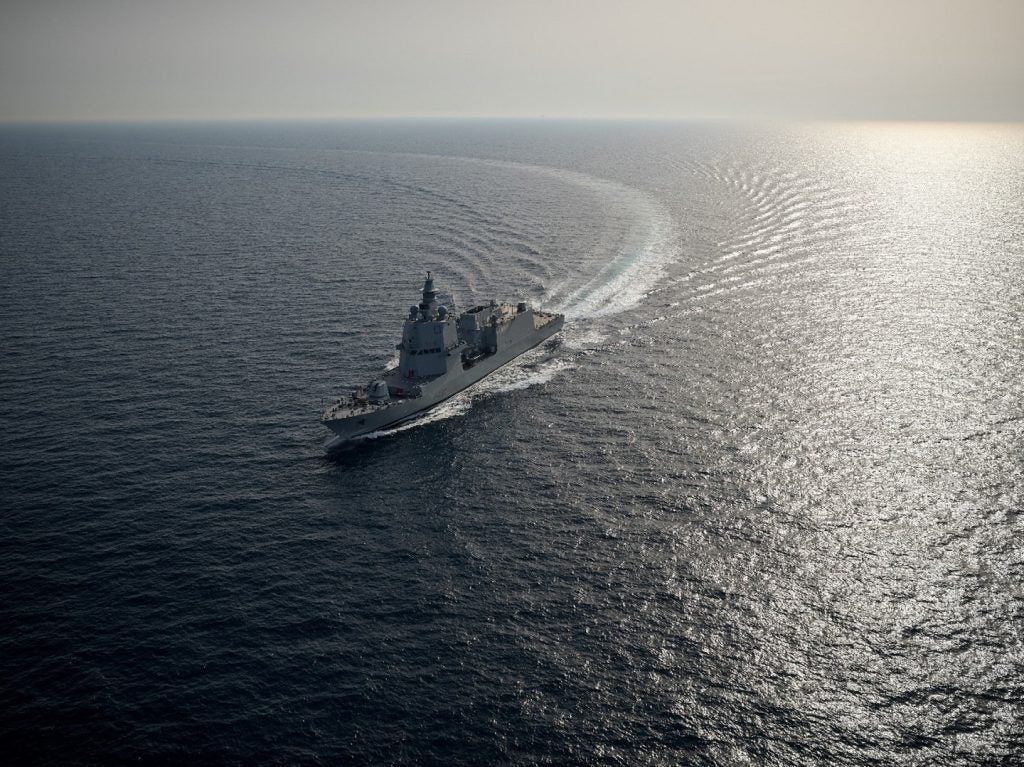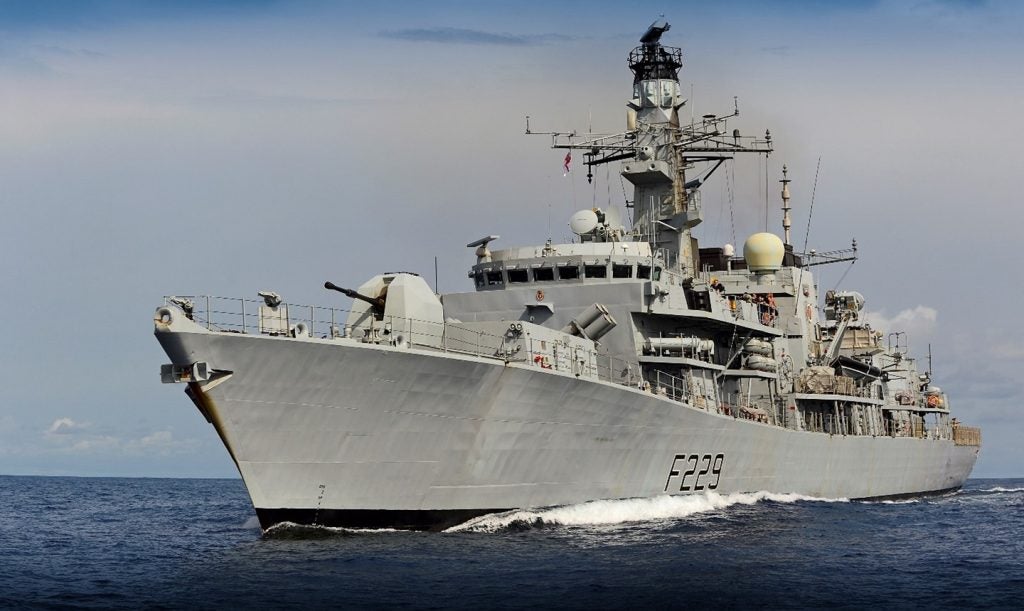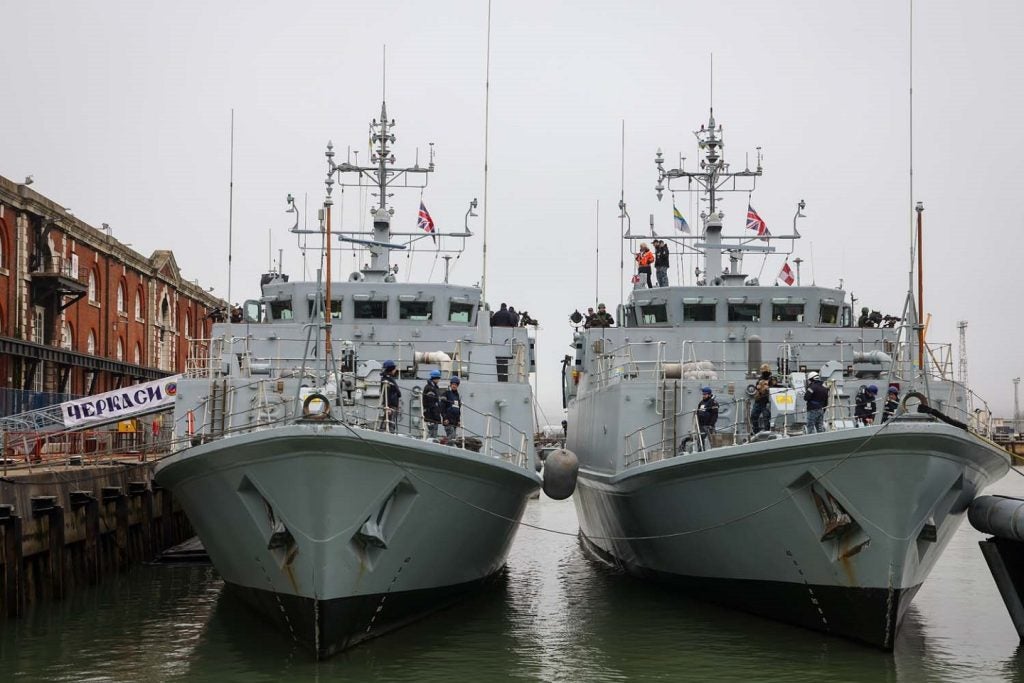
French naval defence and marine renewable energy firm Naval Group has completed testing of the launch and recovery system (LARS) at the Maritime Research Institute Netherlands (MARIN) test facilities in Wageningen.
The company claimed that it achieved 100% recoveries of ECA Group’s Inspector 125 up to and including sea state 5/6 using the LARS.
During the trials, Belgian and Dutch officials witnessed the launching and recovery of unmanned surface vehicles (USVs) using Naval Group LARS. The tests were conducted up to sea state 5/6 (wave height of 4m) and with incoming waves from all directions.
Naval Group mothership features one port and one starboard LARS. Each LARS comprises a pivoting A-Frame davit with the USV weighing up to 18t, which is located in a floating cradle. It enables two USVs to be launched simultaneously.
The company said that these will be used to operate two ECA’s Inspector 125 USV for the Belgian-Dutch mine countermeasure (MCM) programme conducted by Naval Group and ECA Group consortium Belgium Naval Robotics.
The tests are part of a series for the MCM BE/NL programme. In August 2019, first tank tests were conducted with the same scale model of the ship’s hull and propulsion system but under calm sea conditions.
How well do you really know your competitors?
Access the most comprehensive Company Profiles on the market, powered by GlobalData. Save hours of research. Gain competitive edge.

Thank you!
Your download email will arrive shortly
Not ready to buy yet? Download a free sample
We are confident about the unique quality of our Company Profiles. However, we want you to make the most beneficial decision for your business, so we offer a free sample that you can download by submitting the below form
By GlobalDataNaval Group’s objectives were to confirm and fine-tune computational fluid dynamic predictions for speed and to validate the overall hull drag and propellers efficiency. It also aimed to assess interactions between the hull and propulsion system to estimate the ship’s propulsion power.
The next series of tests are to be held in February and will assess the cradle-handling dynamic aspects.
According to Naval Group, the contract for 12 minehunters for the Belgian and Dutch navies will last 10 years.
After a design period of three years, Belgium Naval & Robotics will begin the production phase for the ships and drone systems and the first delivery is expected in 2024.
Under the terms of the contract, six ships will be delivered to the Dutch Navy and six to the Belgian Navy. All vessels will be equipped with complete drone systems containing more than a hundred underwater, surface and aerial drones for anti-mine measures.






